Tajik Handicrafts
Tajik handicraft culture
Tajikistan has a rich tradition of handicrafts, with a variety of crafts produced across the country. These handicrafts often reflect the history, culture, and natural environment of Tajikistan, and are made using traditional techniques and materials. Tajikistan has a strong folk art tradition across the nation, particularly with the creation of textiles, embroidery, and other practical decorative arts such as carving, furniture, and jewelry making. In general, it can be said that Tajik and Uzbek handicrafts are very close to each other in Central Asian context.
Tajik Embroidery
Tajik embroidery is a traditional art form that is widely practiced throughout the country. It is used to decorate clothing, household items, and other textiles, and often features intricate patterns and bright colors. Some of the most popular designs include floral motifs, geometric shapes, and traditional patterns. Embroidery is often done using a needle and thread, and the designs are created by hand. Women are usually the ones who practice embroidery in Tajikistan, and it is often passed down through generations of families.
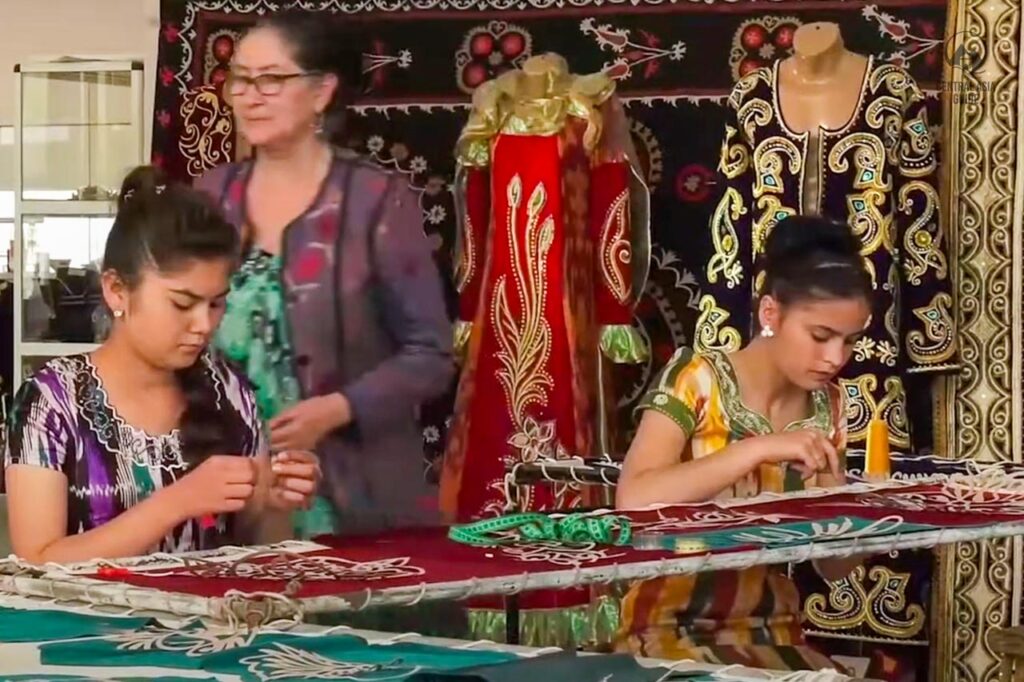
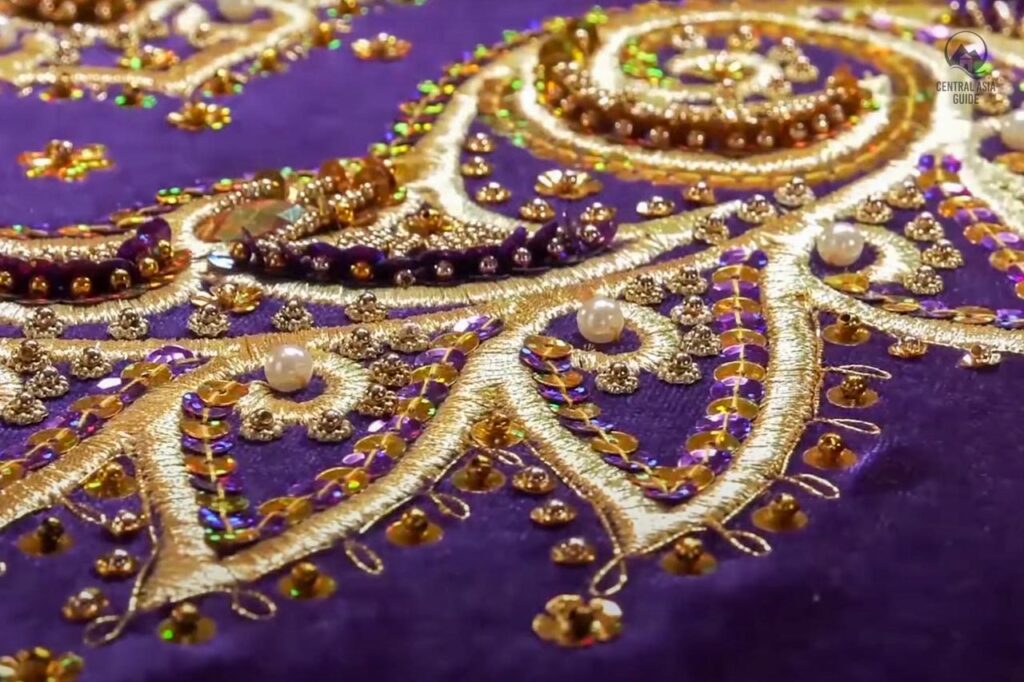
Zardozi embroidery
Zardozi means “gold embroidery” an embroidery from Iran, the Indian subcontinent as well as Central Asia. The word Zardozi comes from two Persian words “zar” or “zarin” meaning the gold “dozi” meaning “sewing” Zardozi is a type of heavy and detailed metal embroidery on a silk, satin, or velvet fabric base. Designs are usually made using gold and silver threads and can incorporate pearls, beads, and precious stones. It is used as decoration for a wide range of applications, including clothes, household textiles, and animal trappings. Initially, it was used to ornament the walls of royal tents, scabbards, wall hangings, and the paraphernalia of regal elephants and horses.
Chakan Embroidery Art
Chakan embroidery is the technique of sewing symbolic images on cotton or silk with brightly colored thread. It represents mythological images, nature, or the cosmos. The embroidery is accomplished on clothing and common household items such as curtains, bedspreads, and pillows. Chakan items are an essential part of marriage ceremonies, with a bride wearing a Chakan shirt and the groom wearing an embroidered skullcap called a “tāqi”. Tajik women and girls will commonly wear Chakan clothing during national festivals and holidays.

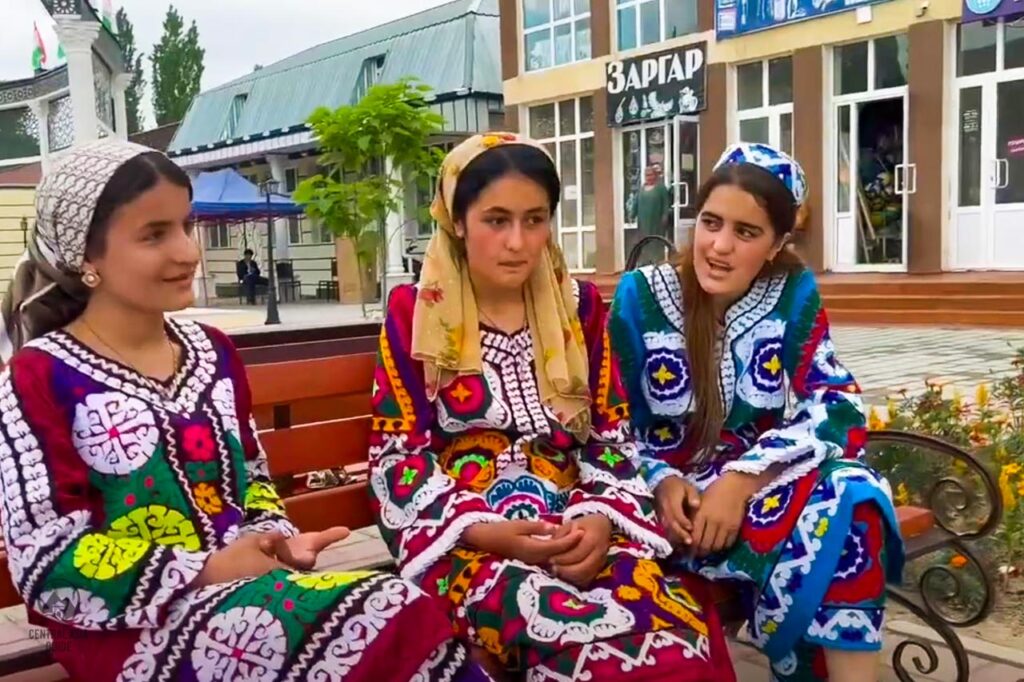
Mainly women create this art form, either individually or in collective groups. While working individually the craftswomen will get help from their daughters and other family members. In a communal environment, the craftswomen gather in one home, taking direction from the most experienced one and being assigned an individual task for the process. The tasks can contain image design, fabric cutting, embroidering, sewing garments, and taking orders for the sale of the products. The products created by these craftswomen are sold in bazaars or dress shops, providing an important source of income.
The Chakan embroidery practice is passed down from one generation of women to the next, to secure the method continues to thrive. A craftswoman will pass down her knowledge to her daughter, granddaughter, and daughter-in-law. In 2018, Chakan embroidery was marked on UNESCO’s Representative List of the Intangible Cultural Heritage of Humanity.
Tajik Suzani
Suzani is a type of embroidered textile that is traditionally used as a decorative wall hanging or bedspread. It is often made using cotton or silk fabric, and the designs are created using a needle and thread. Tajikistan is famous for its suzani, which often feature intricate floral and geometric patterns. The designs are usually embroidered in bright colors, and each suzani is unique. Suzani making is often a family tradition passed down from generation to generation, and it requires a high level of skill and patience.
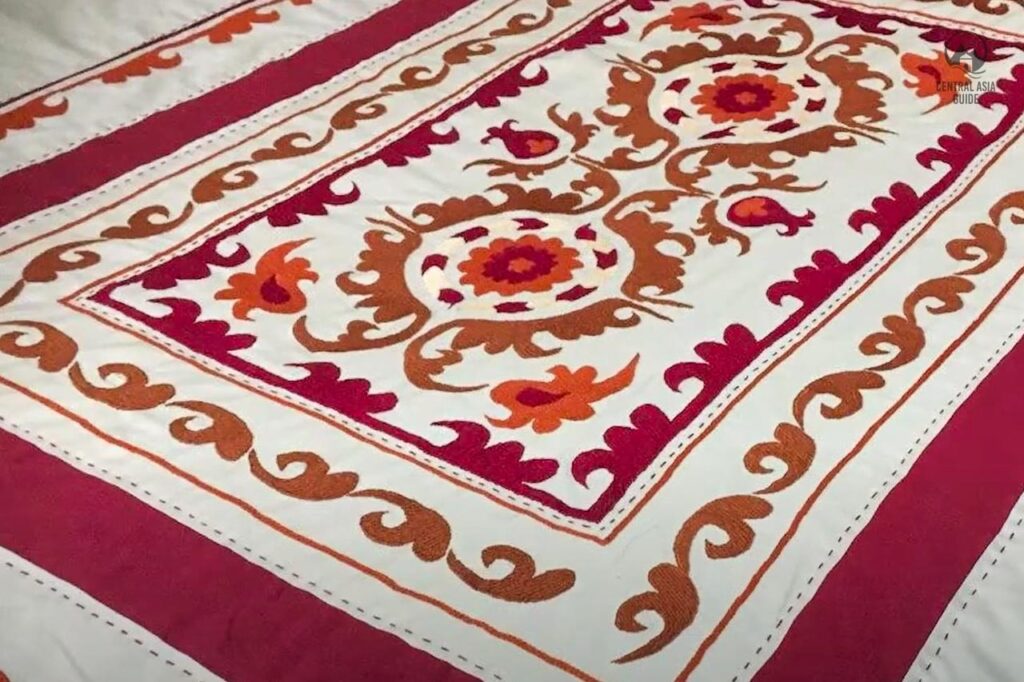
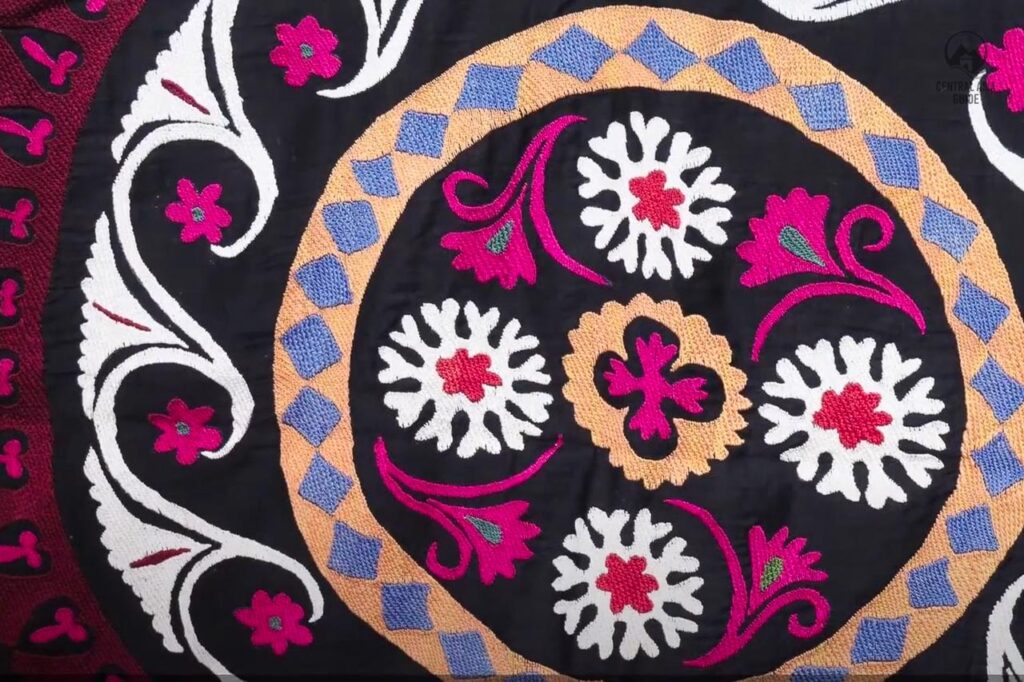
Tajik woodcarving
One cannot visit Tajikistan without noticing the amazing detail of wood carving in many many houses, religious and governmental buildings. Skillfully carved wooden ornaments decorate the monuments of architecture, household objects, musical instruments, utensils, doors, frames and souvenirs. This is one of the most ancient and widespread crafts in Tajikistan. There are woodcarving (utensils, furniture), stone carving and ganchu (architectural monuments, houses, interior decoration).
Long time ago images of people and animals were widely used in carving. After Islam had been introduced they gradually disappeared to be replaced by numerous Arabian inscriptions. Some carvers prefer “vegetative”, geometrical patterns. Household objects are normally decorated with onychoid four-leaf carving made on red-black painting. In architecture the ornamentation in the form of lotus, tulips and other flowers is more characteristic.
Besides mosques and madrasahs carving was used decorating of gravestones and mausoleums. All carving elements can be also seen in modern housing architecture and especially in Pamir.
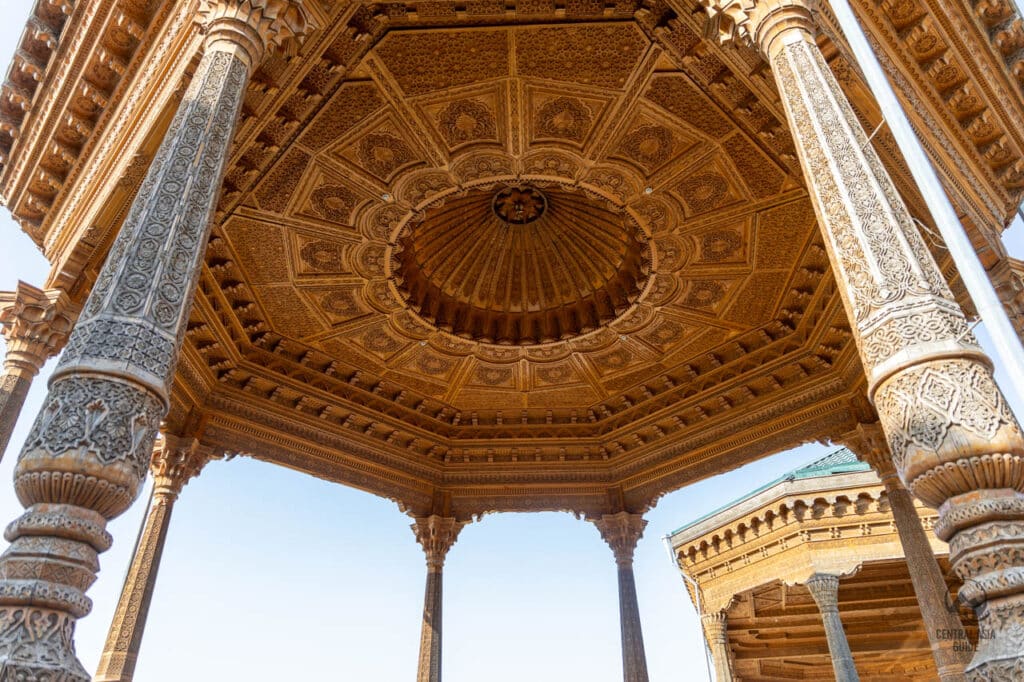
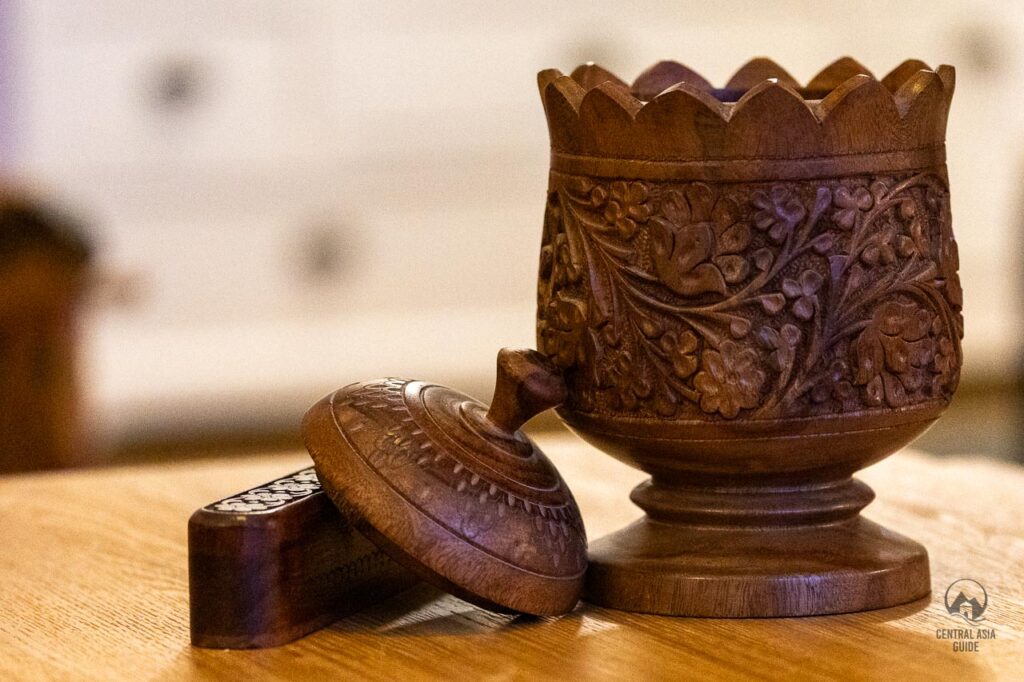
Tajik Ceramics
Tajik ceramics are often made using traditional techniques and materials. The designs are often colorful and feature intricate patterns and motifs. Pottery and tiles are commonly made, and they are used to decorate homes and public buildings. Ceramic artists in Tajikistan often use a potter’s wheel to shape the clay, and the designs are created using various techniques, including carving and painting. Some of the most popular designs include floral patterns, animals, and traditional motifs.
Stone products from Pamir
As Pamir is rich in gems, gemstones and semi precious stones, it is only natural that there are different household items made from the most abundant materials available, the stones.
One of the greatest souvenirs from Pamir, in addition to jewelry are other stone made, household items and decorative items. Great examples are chess sets with stone made characters and stone made cups.
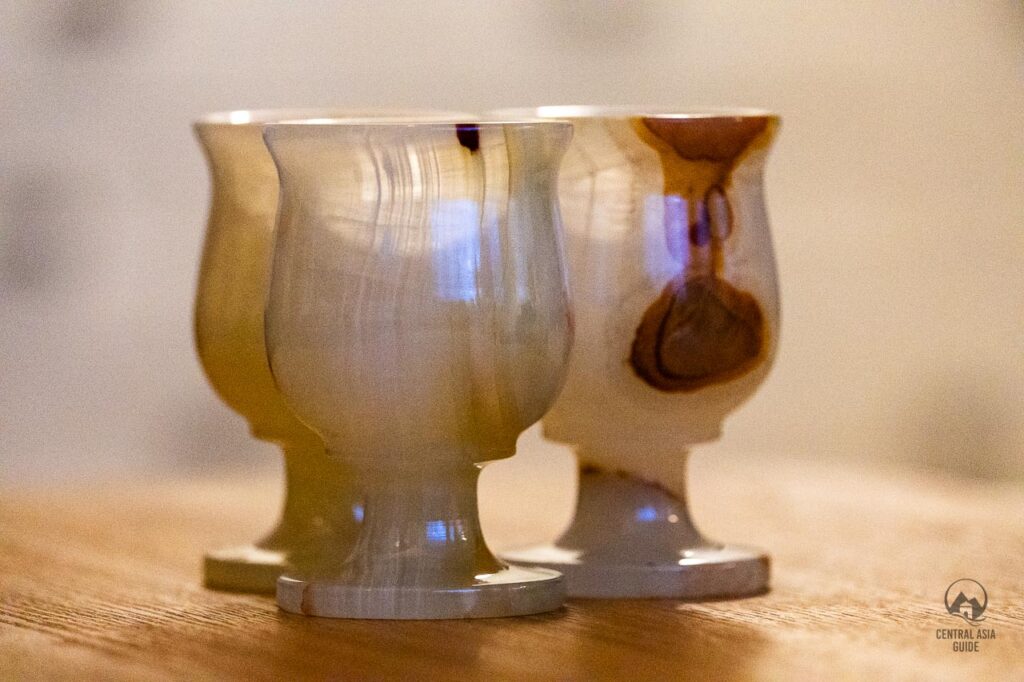
Tajik Gemstone Jewelry
Tajikistan and especially the Pamir is rich in gemstones so there is an abundant amount of raw material for jewelry production. There are several very beautiful colors of the different gemstones they collect and process for the Pamiri jewelry. There is also ruby production in Pamirs but they are not publicly sold in Tajikistan.


Tajik Calligraphy
Calligraphy is a popular art form in Tajikistan, with many artists specializing in the creation of intricate and decorative scripts. Tajik calligraphy often features traditional Arabic script, and the designs can be found on a variety of surfaces, including paper, wood, and ceramics. Calligraphy artists in Tajikistan use a variety of techniques, including brush and pen, to create their designs. The art of calligraphy is highly respected in Tajikistan, and it is often used to decorate mosques and other religious buildings.
Read more about Central Asian handicrafts
Page updated: 22.2.2023